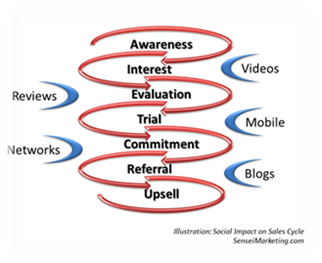Analysts love metrics. Specifically, metrics that can be easily selected, tracked and added, which when aggregated provide the raw data resources to create benchmarks and predict how the audience may behave in the future. To analysts – at first anyway – Social Media seemed God-sent because it allowed direct access to that audience and provided immediate and unfiltered feedback. No longer did we have to run costly focus groups with representative samplings and impose those findings on the whole. We now have access to the entire community and the ability to solicit feedback from the entire group.
So why is measuring Social Media still such a debate?
We’ve all seen the statistics on the growing number of people that continue to flock to social channels to share their experiences and opinions. According to a JC Williams Study, 91% of those surveyed indicated that customer content is their primary decision criteria. In a similar study, Marketing Sherpa reports 87% trust a friend’s recommendation over a critic’s review. We all know this; what we don’t know is how to effectively quantify its value to the business.
Marketers have begun to map how  Social Media influences the sales cycle, yet it’s that influence that business executives and marketers struggle with. Blogs, Social Networks, Mobile Check Ins, Product Reviews, etc. all have an impact on the sales cycle. It’s been estimated that 1 word-of-mouth conversation has the impact of 200 TV ads but there’s an evolving threat to the purchase decision beyond simple social commentary. We are now beginning to understand the importance of the nature of the engagement that consumers have with each other, the product and the brand’s employees. These relationships directly (those your customers are engaged in) and indirectly (those that are being observed by others) form an impression that has more influence over the sales cycle than user-generated content.
Social Media influences the sales cycle, yet it’s that influence that business executives and marketers struggle with. Blogs, Social Networks, Mobile Check Ins, Product Reviews, etc. all have an impact on the sales cycle. It’s been estimated that 1 word-of-mouth conversation has the impact of 200 TV ads but there’s an evolving threat to the purchase decision beyond simple social commentary. We are now beginning to understand the importance of the nature of the engagement that consumers have with each other, the product and the brand’s employees. These relationships directly (those your customers are engaged in) and indirectly (those that are being observed by others) form an impression that has more influence over the sales cycle than user-generated content.
Measuring the nature of that influence is what has so many analysts perplexed when it comes to gauging the effectiveness of social media engagement. How do you measure the “nature of influence” on the sales cycle in linear, numerical statistics that executives demand and are accustomed to? Tracking and reporting social activity such as likes, follows, referrals, purchases, etc. does not translate to this new requirement.
The Common Measurement
There’s one common measurement denominator that many social media marketers have been avoiding but that can solve this dilemma: profit. Measuring anything in a business is meaningless if there’s no business, and profit is the lifeblood of a business. So measurement goals must shift from counting metrics such as social activities to monitoring how social engagements are impacting the business’ bottom line. Measurement practices must evolve to chart the entire customer lifecycle including the conversations that influence it.
Tracking and scoring the context, frequency, participants and tone of conversations that touch the customer lifecycle – and how the outcome on the business’ profit differs when the nature of those influencers change – is key.
We live in an era where our brains are almost literally connected to each other through technology. Decisions are considered and made by the collective. We’re currently measuring how that collective makes decision based on the amalgamation of individual experiences but the next frontier in social media measurement is to identify how the nature of influence impacts the bottom line.
Guest Author:
